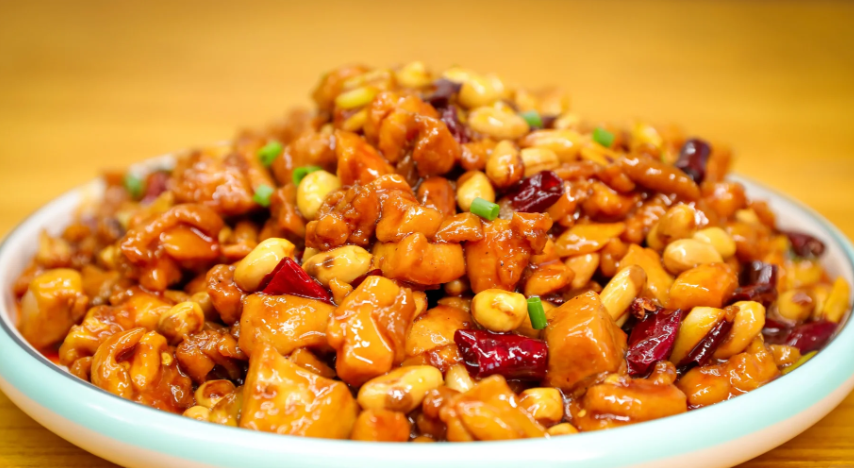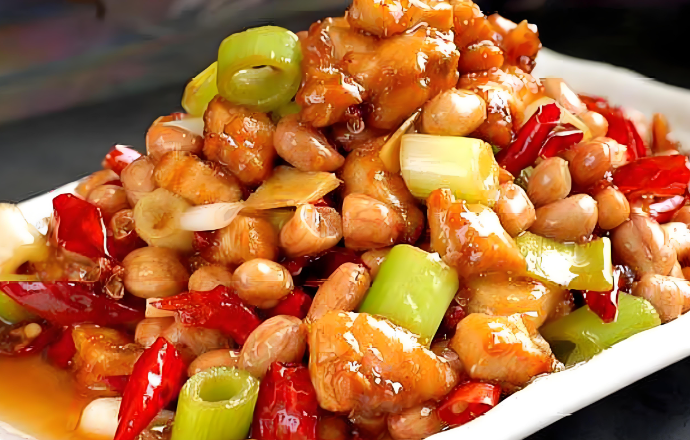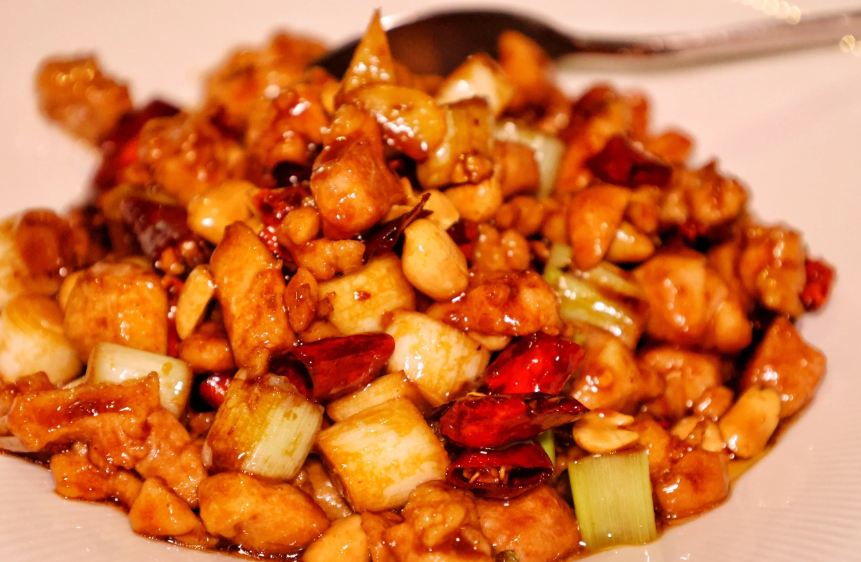Kung Pao Chicken (宫保鸡丁), one of China’s most iconic dishes, traces its roots to the late Qing Dynasty. Named after Ding Baozhen, a respected governor of Sichuan Province, the dish honors his legacy. Ding, who held the honorary title “Palace Guardian” (Kung Pao), was a culinary enthusiast. Legend says he fused his love for Shandong-style stir-fried chicken with Sichuan’s fiery flavors, adding chili peppers and peanuts to create this masterpiece.
Originally a family recipe, Kung Pao Chicken gained fame through Sichuan’s bustling eateries and later became a global sensation, symbolizing the harmony of Chinese regional cuisines.
Ingredients: A Balance of Texture and Heat
This dish thrives on simplicity and contrast:
- Tender chicken: Diced breast or thigh, marinated in soy sauce, rice wine, and starch for succulence.
- Crispy peanuts: Roasted for nutty crunch.
- Aromatic spices: Dried chili peppers and Sichuan peppercorns (huajiao) create the signature “mala” (numbing-spicy) flavor.
- Sauce: A tangy blend of vinegar, sugar, and soy sauce balances heat with sweetness.
Cooking Technique: The Art of *Wok Hei*
Authentic Kung Pao Chicken demands high-heat stir-frying to achieve wok hei—the smoky essence of Chinese cooking. Key steps:
- Marinate: Coat chicken in soy sauce, starch, and rice wine for 15 minutes.
- Toast peanuts: Fry until golden for crunch.
- Stir-fry: Sizzle chili peppers and Sichuan peppercorns in oil, then add chicken.
- Sauce infusion: Toss with the sweet-sour sauce and peanuts for glossy perfection.
The result? A vibrant medley of tender meat, crunchy nuts, and bold spices that dance on the palate.
Cultural Impact: From Sichuan to the World
Kung Pao Chicken’s global journey began in 1986 when it dazzled at Luxembourg’s Gourmet Exhibition, earning international acclaim. While Western adaptations often tone down the heat, traditionalists cherish its authentic mala punch.
Today, it’s a menu staple in Chinese restaurants worldwide, bridging cultures through flavor.
In Sichuan, the dish remains a culinary ambassador, reflecting the province’s love for bold, inventive cooking.
Why Foreigners Love It
- Adaptability: Chefs swap chicken for pork, shrimp, or tofu, catering to diverse tastes.
- Flavor adventure: The interplay of sweet, sour, and spicy appeals to adventurous eaters.
- Cultural storytelling: Each bite echoes Ding Baozhen’s legacy and Sichuan’s culinary spirit.
Recipe Tips for Home Cooks
- Use fresh Sichuan peppercorns for authentic mala tingle.
- Control heat: Adjust chili quantity based on preference.
- Serve immediately to preserve the peanuts’ crispness.


















No comments yet